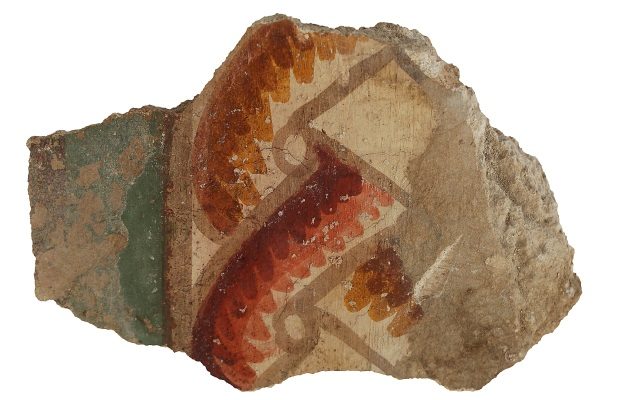Thousands of archaeological sites across Israel attest to its rich history as well as the historical ties of the Jewish people to the region.
A team of researchers from the Hebrew University of Jerusalem have discovered hundreds of plaster fragments, parts of rare Roman-era frescoes, in the Zippori National Park in northern Israel.
The fragments, which contain figurative images, floral patterns and geometric motifs, shed light on Zippori’s ancient history, an important urban center for the Jews of the Galilee during the Roman and Byzantine periods.
The frescoes decorated a monumental building that was erected in the early second century CE north of the decumanus, a colonnaded main street that cut across the city from east to west and continued to the foot of the Acropolis.
It is yet unclear what the large building’s function was. The nature of the artifacts discovered indicate that it was an important public building. The center of the building had a stone-paved courtyard and a side portico decorated with stucco. Several underground vaults were discovered west and north of the courtyard. Some of these were used as water cisterns and were of high quality construction.
The monumental building was destroyed in the third century CE, for reasons yet unclear, and was replaced by another public building, larger than the first. The structure’s building materials — stone and plaster, some colorful — were buried under the floors of the new building.
The patterns on the plaster fragments are varied and are decorated in many colors. Among them are geometric patterns and brightly colored wall panels. Other fragments contain floral motifs, light shaded paintings on red backgrounds or various colors on a white background.
The figures painted in the frescoes — the head of a lion, a horned animal, perhaps a bull, a bird, a tiger’s hindquarters and more — are of great importance. At least one fragment contains a depiction of a man bearing a club. Research on these pieces is in its early stages.
The population of Zippori prior to the Great Revolt against the Romans, which ended in 70 CE, was not very large, and archaeological finds dating to this period are particularly notable for the absence of figurative images – both humans and animals.
The Romans rebuilt Zippori after the Great Revolt, in the late first century and the second century CE. The city gained the status of a polis thanks to its loyalty to Rome during the Great Revolt, and constructed monumental public buildings, as befit a polis, that stood out in the urban landscape. The building currently under research was built during this period.
The frescoes are rare and unique because of their assumed early date, the early 2nd century. Parallels to this discovery are virtually unknown at other Israeli sites of the same period. Wall frescoes from the 2nd and 3rd centuries have been previously found.
The new finds clearly reflect the multi-cultural climate that characterized Zippori at that time.
By: Aryeh Savir, World Israel News





